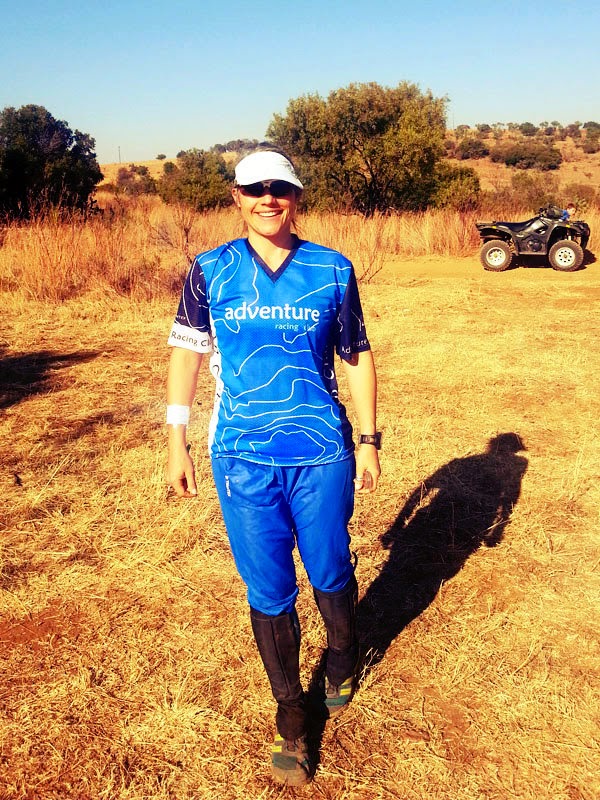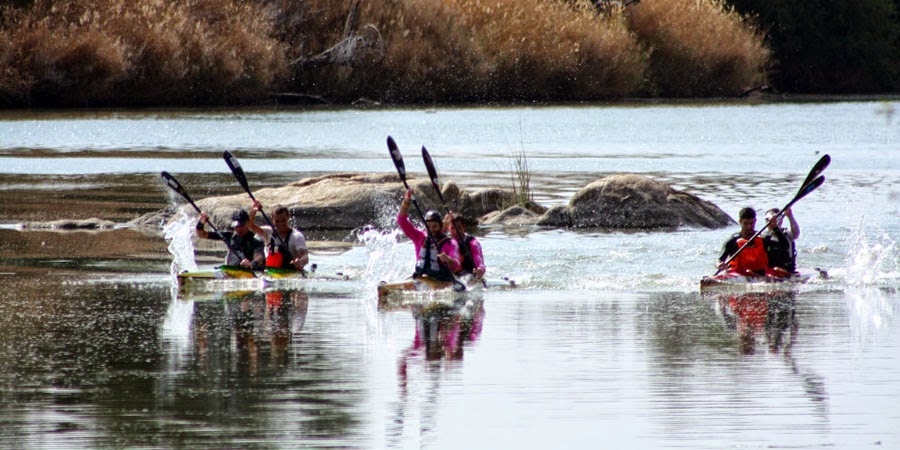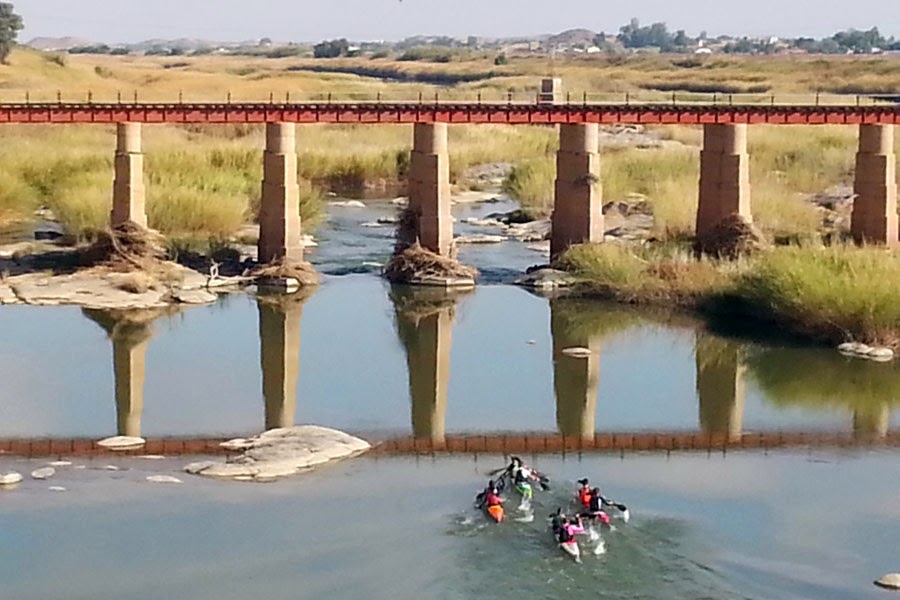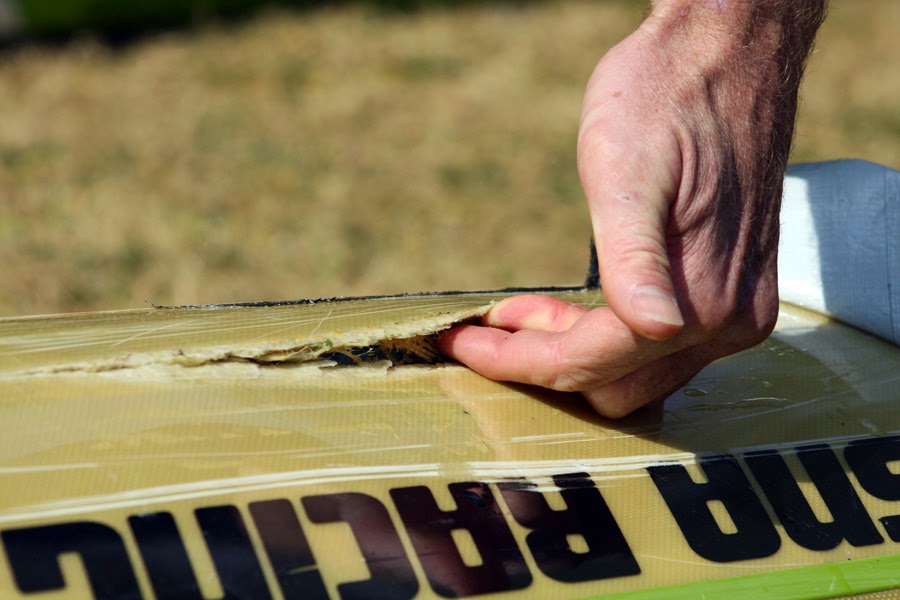The series of Bush Orienteering events (formerly called colour-coded and then cross-country) are definitely bushy. It's this time of year when our events head onto rough, rocky, grassy and bushy highveld terrain. They're my favourite-favourite of the orienteering events. This was my first one since Gauteng O Champs in June.
 |
| Hip-hip-hooray for Adventure Racing Club! |
At each event there are a variety of courses ranging from short (like 2-3km) courses for newcomers and children to the long and technically challenging Brown courses. The short courses stick to paths; the long courses head into the vegetation.
At registration this morning there was a new guy. So Sarah B, who was handling registrations asks him which course he is doing. "Brown," he says.
"How much orienteering have you done?" I ask.
He's a bit hesitant.
"Only a few."
"Then I don't think you should be doing Brown."
Here's the thing. People see that the course is 'only' eight kilometres. But in orienteering this is as-the-crow-flies. And, even if actual distance turns out to be 10km, you've got to find your way through bushes and down crags and under fences. It's not a straight-up 10km.
But, he's keen to do Brown.
"OK," I say. "But, you've been warned. We'd like you to come back another time."
We once had some less experienced adventure racers on a property across the road (same terrain) on an 8km Brown course for 5hrs...
He was good humoured and in for the adventure. Ja, no, well, fine.
Here's my full map.
My first six controls were a breeze. Having just passed through the gate and en route to #7, the new dude caught me. He started three minutes behind me. Not bad!
We both made an excellent error here.
Gate to Control 7
I quite enjoy errors because I like the problem solving involved in getting out of it.
Here's my approximate route...
So, heading North I came through the gate. I could swear that there was a junction and I took the right split... Evidently not! I wanted to be on the road next to the fence (but looking now the road I was on was actually a really good option). But then that funny road shape didn't really happen. It was around here that I saw the new guy and so I asked how he was doing and we had a quick few words. He then left the road and ducked into the grass to our left. I thought he was heading in too soon so I carried on down the road.
This mistake was totally because I wasn't paying attention. I mean, there wasn't even a fence to my right, which there should have been. Aaarrggghhh... so silly.
I ran on the road until about the light green / boulders on my right. I could hear and see the new guy thundering through the bushes on my left. I headed into the grass. There was a lot more contour action happening, similar to what I was expecting on the way to #7.
We met up and figured that we'd done something really stupid. We could see the road outside the property and that how we knew we'd missed our split and had, in fact, been on the wrong road. Soooo elementary! But it does happen. Just to keep you on your toes. Navigation has no sympathy.
So, we shot off back to the road (always a good recovery measure to head back to your last point of certainty). Boom! There was the intersection, the road and easy-peasy to the control.
We stuck together for the rest of the course. He runs a bit faster than me but my lines were better.
Control 8 to Control 9
We had a good route here. I just wanted to show you some options.
From #8 you can see the road on the other side of the spur (see where the orange arrow is pointing). My new buddy wanted to head that was, straight for the road.
"Have you seen the dark green and the cliff on the way there?" I asked.
There's first a lot of drop into the valley and then a steep climb up through vegetation.
He joined me on a route to the road. Sure, there was some steep climbing, but far better on road than crawling through thorn trees.
From Control 10
Straight line through the grass, vegetation and rocks... Or rocky off-road run? Ja.
At Control 11
An easy one. Really. Run road. Reach T-junction. Keep going past the first vegetated boulder cluster. When I got to where I thought the control was I didn't see it. Surprise, for sure. I was about two metres from it. I'd checked my control descriptions and, as I recall, I think it was to the West of the boulder feature. Mmmm..
Then I wondered whether my distance judgement was out. Further down I could see other boulders but it looked too far away. Mmmm.
I walked to the start of the vegetation but it was definitely not right. I turned around and thought that I'd better look around the rocks where I'd been because I really hadn't looked thoroughly when the control wasn't where I expected to see it. My friend started moving towards another cluster of boulders incase we'd hit the wrong group. And then some other people found our control as I was approaching - only it wasn't their control.
Lo-and-behold we'd been on target, metres initially from our control. Doh! This is what happens when you chitter-chatter at orienteering! A long, easy no-thinking road run plus chatting and the mind does like porridge!
My new O friend did really, really well. He has orienteered in the UK a few times and he said that he did indeed underestimate how challenging this highveld terrain would be. He has a British Military background and thus foundation nav skills. Although he doesn't know all the orienteering colours and symbols, he's mostly on track with map orientation, route choice and moving over rough terrain. Today he learned to fold his map (we were on an A3 map today) and thumb (place your thumb on where you are). With a bit more practice in this type of environment he'll definitely climb up the ranks (and hopefully join my club - hahahaha).
The rest were all straight forward.
 |
| Highveld terrain. complete with barbed-wire fences. |
I ran with Runtastic on my phone today. I've been interested to see how much data the app uses over a longer period of time. I had the app running from before I started. Total time was 2h17 and it used 1.74MB.
I covered 10.78km.
Any event where you're crawling like an animal through bushes, squeezing between barbed wires of fences, using your hands to get up embankments and drawing blood is an event worth doing ;)
 |
| I thought that I'd grazed my leg on a rock near control 9. It was stinging for ages and I looked down to see blood on my gaiters. Aaaahhhh... All cleaned up now. Looks like a bash and cut combo. Swelling should be down by tomorrow. And my tetanus shots are up to date. |
This event was presented by the youthful WITSOC club. Well done to Sarah Roffe on her first foray into course planning - I enjoyed your Brown course. And thank you to the other WITSOC helpers for presenting this event today.






























